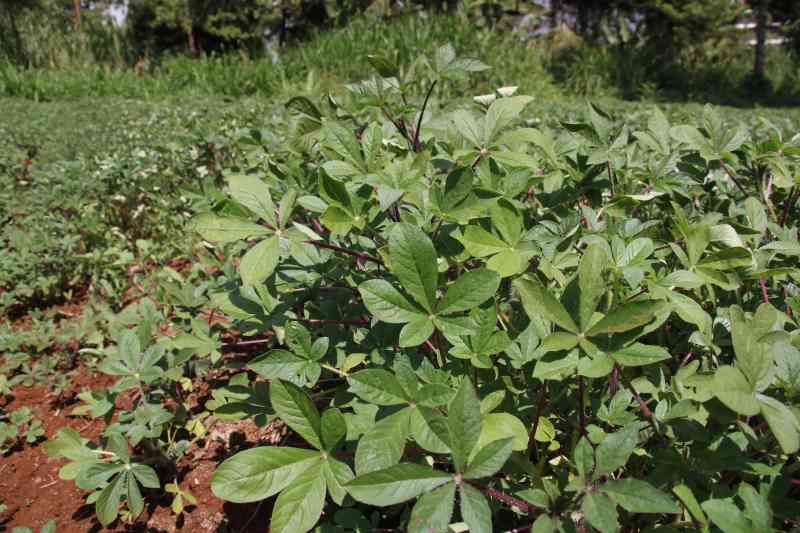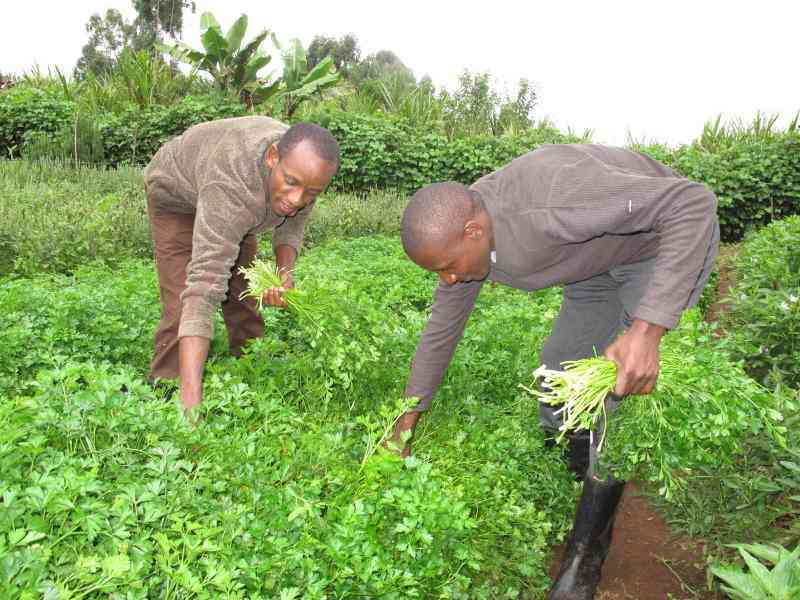A-Z of rain water harvesting
They say when it rains it pours. Much of the country has been under deluge since it began raining in March.
Rain is considered a blessing. That is because water is the silent fuel that propels life – especially in farming fields.
But we have also seen the grim https://cdn.standardmedia.co.ke/images of homes overrun by floods and families displaced. The rain is simply ‘too much’, some would say. There is water everywhere.
But at the same time the reality of drought in a few months/years cannot be ignored. It is a cycle well known to any farmer worth his salt.
This week, Smart Harvest talked to water specialists and scientists on the different ways through which farmers can harvest and store rain water for future use.
1. Dams
Dams are barriers on water ways designed to hold water to a certain capacity. Dams, says Joshua Kituu, an agricultural and water engineer, can hold vast amounts of water that can provide water security for a small scale farmer.
“By dams we mean small-scale constructions to cater for the needs of a family or a small community,” Kituu says.
Like large-scale commercial and hydroelectric dams, small dams are also constructed on water paths. Kituu says: “It can be a seasonal stream or a path for rainfall runoff.”
While such dams are fairly simple, Kituu says that it may help if the farmer consulted agricultural engineers – even those who work for the counties – to advise on structural integrity.
2. Ponds
Water ponds are dug out of the ground into a trough shape. The best ponds are shaped like a wheelbarrow, Kituu points out.
“This is because ponds built with 90 degree walls have a tendency of collapsing inwards,” he says.
According to Kituu, a farmer should first determine their water needs then determine the size of the pond. Different crops have different water requirements.
For best results, both ponds and dams can be reinforced with dam liner technology, Kituu says.
Dam liners are impervious barriers that block water from seeping into the ground and surrounding soils. There are different technologies used as pond liners. The most readily available – and relatively affordable – in Kenya are PVC based liners which are often black in colour.
Ponds, he explains, do not need much technical knowledge and therefore a farmer would not need to outsource for manpower.
3. Sand dams
Sand dams are famous in the larger Eastern province.
Sand dams are prepared much in the same way as the common dams. With sand dams, sand collects first to form a spongy column.
Sand dams work best with seasonal rivers with high sand profile. Sand dams recharge groundwater – raising the water table closer to the surface.
4. Water tanks
Water tanks can store thousands of litres of water.
Plastic tanks have become common place around the country. But tanks can be made from other materials.
Jennifer Kiio, from Kathonzweni in Makueni, got masons to design and build an underground water tank with concrete and steel.
“I needed a big tank to collect almost 60,000 litres. I couldn’t find a plastic tank with that capacity,” Jennifer says.
Other tanks are made from steel.
5. Zai Pits
Zai pits are originally used in West Africa. Zai pits are small planting pits that measure 20-30cm in length and width and 10-20cm deep.
Zai is an ancestral practice in Burkina Faso to regenerate crusted soils by breaking up the crust to improve water infiltration.
Zai pits improve the soil’s ability to percolate water during heavy rainfall, says Kituu. The pits can retain moisture for a long period of time even after the rains, he says.
“The farmer can plant inside the Zai pit or around it,” says Kituu.
The technology is best for ASAL areas that receive between 300 and 800 millimetres of rain.
6. Terraces
Terraces are an old farming method that has been practised by farmers in mountain regions. Originally, terraces are built to provide a larger surface area for cultivation on hill slopes.
However, terraces also increase water infiltration and reduce surface runoff. Terraces, says Kituu, are best adopted in ASAL regions where rainfall is scarce.
“During heavy and long rains the terraces absorb as much as possible, therefore acting as a reservoir,” says Kituu.
7. Water Absorbent Granules
According to engineer Kituu, water absorbent granules are granular in form and have the ability to absorb water up to 400 times their weight.
The granules are mixed with soil and left in the field awaiting rainfall. “The granules are able to store water over a long period of time – releasing the moisture slowly during drought,” Kituu points out.
Kituu says that water absorbent granules are available and affordable in the Kenyan market. They are best used with tree crops.
8. Spate Irrigation
Spate irrigation is the art and science of water management that is unique to semi-arid environments.
It has mostly been used in the Middle East and North Africa but has been adopted in other parts of Africa.
James Raude, an environmental engineering systems specialist says that with spate irrigation, flood water is diverted into a farming field. Spate irrigation, as the name suggests, uses floods for irrigation.
9. Water pans
Water pans, like ponds, are dug out spaces. Water pans naturally take the shape of a bowl.
Water pans collect runoff water to its capacity. The challenge with water pans, as with exposed methods of runoff collection, is evaporation.
To slow down evaporation, Kituu says, a shade net can be used to cover the water.
Want to get latest farming tips and videos?
Join Us
Share this article on social
 The Standard Group Plc is a multi-media organization
with investments in media platforms spanning newspaper print operations,
television, radio broadcasting, digital and online services. The Standard Group
is recognized as a leading multi-media house in Kenya with a key influence in
matters of national and international interest.
The Standard Group Plc is a multi-media organization
with investments in media platforms spanning newspaper print operations,
television, radio broadcasting, digital and online services. The Standard Group
is recognized as a leading multi-media house in Kenya with a key influence in
matters of national and international interest.
 The Standard Group Plc is a multi-media organization
with investments in media platforms spanning newspaper print operations,
television, radio broadcasting, digital and online services. The Standard Group
is recognized as a leading multi-media house in Kenya with a key influence in
matters of national and international interest.
The Standard Group Plc is a multi-media organization
with investments in media platforms spanning newspaper print operations,
television, radio broadcasting, digital and online services. The Standard Group
is recognized as a leading multi-media house in Kenya with a key influence in
matters of national and international interest.






